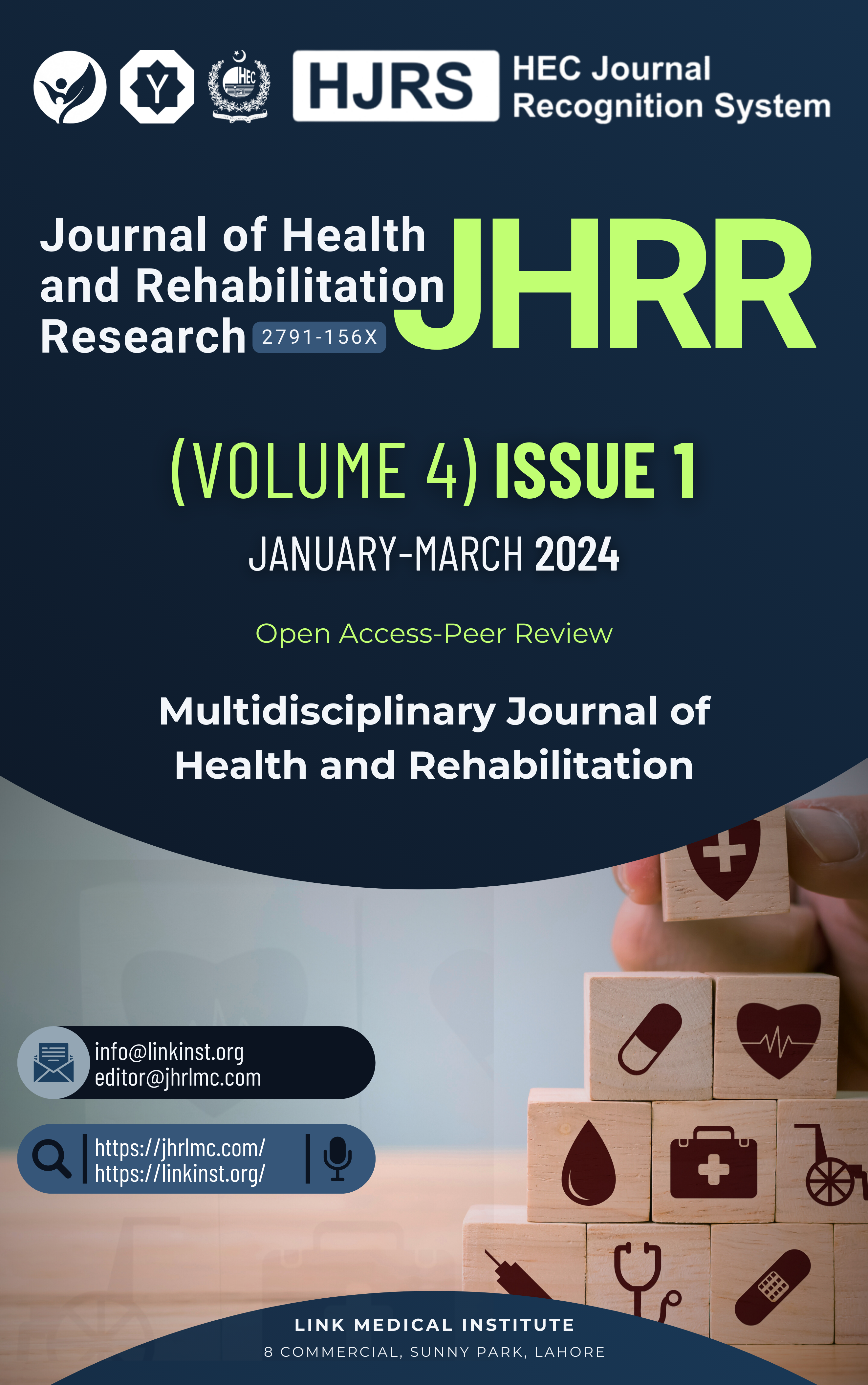Sex, Age, and Lifestyle Correlates of Nephrolithiasis in Sialkot: Evidence from a 450-Patient Hospital Cohort
DOI:
https://doi.org/10.61919/jhrr.v3i2.1858Keywords:
Nephrolithiasis; Industrial Exposure; Lifestyle Factors; Occupational Health; Cross-Sectional Study; PakistanAbstract
Background: Nephrolithiasis is a multifactorial renal disorder with rising prevalence globally, particularly in regions with hot climates, dietary imbalance, and industrial exposure. Despite increasing clinical burden, contextual data from industrial zones of Pakistan remain limited, restricting preventive and occupational health strategies. Objective: To determine the prevalence and demographic, lifestyle, and environmental correlates of nephrolithiasis among adult patients attending hospitals in Sialkot, Pakistan. Methods: A cross-sectional analytical study was conducted among 450 adults recruited from Amina Hospital and District Headquarters Hospital, Sialkot, between Sociodemographic, occupational, and lifestyle data were collected using a structured questionnaire and verified through clinical records. Logistic regression analysis was performed using SPSS v26 to identify independent predictors of nephrolithiasis, adjusting for potential confounders. Results: Overall nephrolithiasis prevalence was 41.1%, higher in males (48.5%) than females (31.6%) (p = 0.001). Independent predictors included male sex (aOR = 2.08, 95% CI 1.34–3.24), rural residence (aOR = 1.79, 95% CI 1.15–2.78), industrial exposure (aOR = 2.21, 95% CI 1.41–3.45), smoking (aOR = 2.26, 95% CI 1.44–3.55), sedentary lifestyle (aOR = 1.62, 95% CI 1.06–2.49), and non-vegetarian diet (aOR = 2.56, 95% CI 1.49–4.38). Model fit was adequate (Hosmer–Lemeshow p = 0.64). Conclusion: Nephrolithiasis in Sialkot is strongly associated with industrial exposure, lifestyle factors, and rural habitation. These findings underscore the need for targeted workplace hydration policies, dietary education, and community-level prevention programs
Downloads
Downloads
Published
How to Cite
Issue
Section
License
Copyright (c) 2024 Saima Ashraf, Aleza Bibi, Adeel Khalid, Gunwa Anwar, Ayesha Ijaz

This work is licensed under a Creative Commons Attribution 4.0 International License.
Public Licensing Terms
This work is licensed under the Creative Commons Attribution 4.0 International License (CC BY 4.0). Under this license:
- You are free to share (copy and redistribute the material in any medium or format) and adapt (remix, transform, and build upon the material) for any purpose, including commercial use.
- Attribution must be given to the original author(s) and source in a manner that is reasonable and does not imply endorsement.
- No additional restrictions may be applied that conflict with the terms of this license.
For more details, visit: https://creativecommons.org/licenses/by/4.0/.






